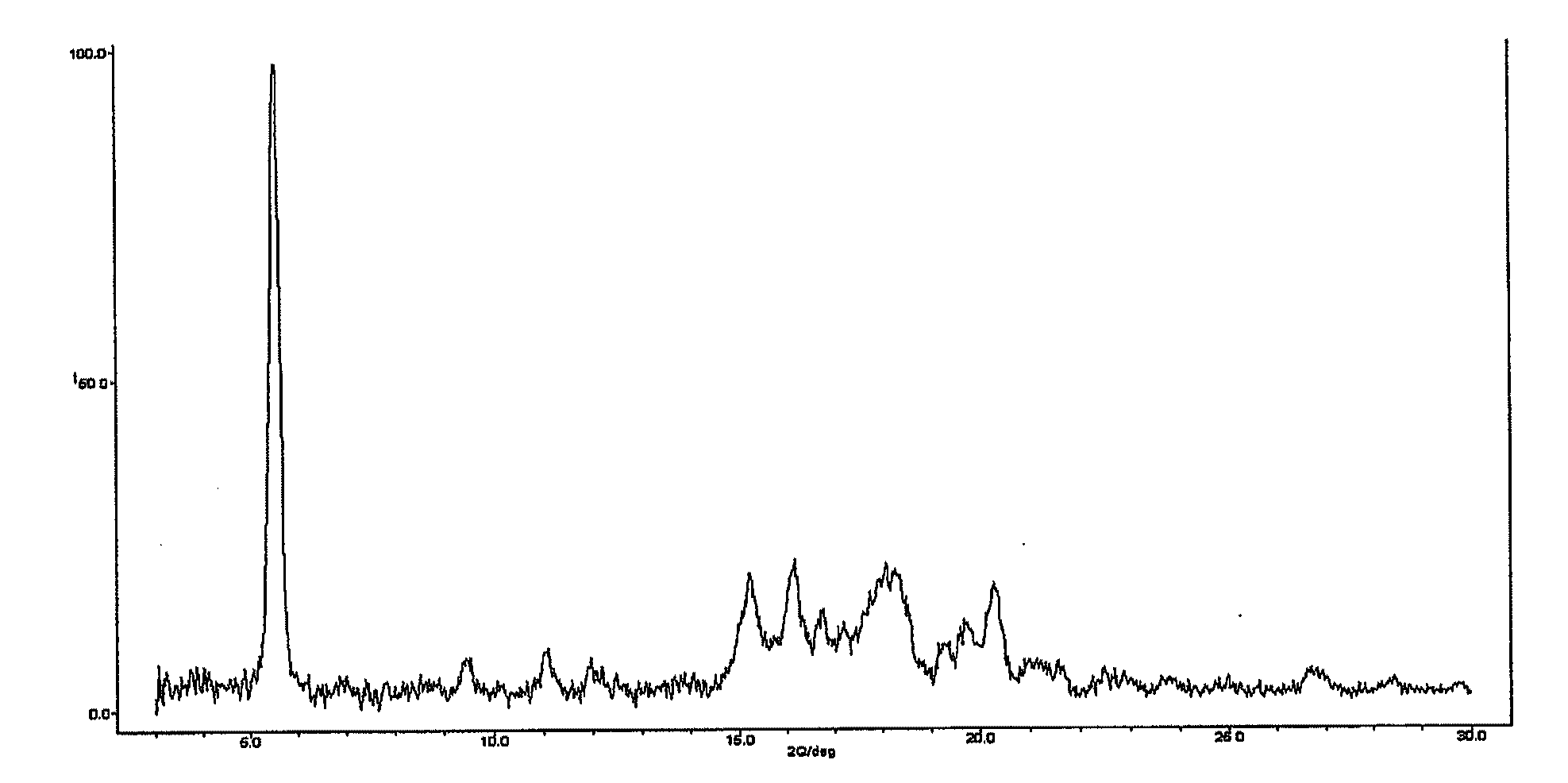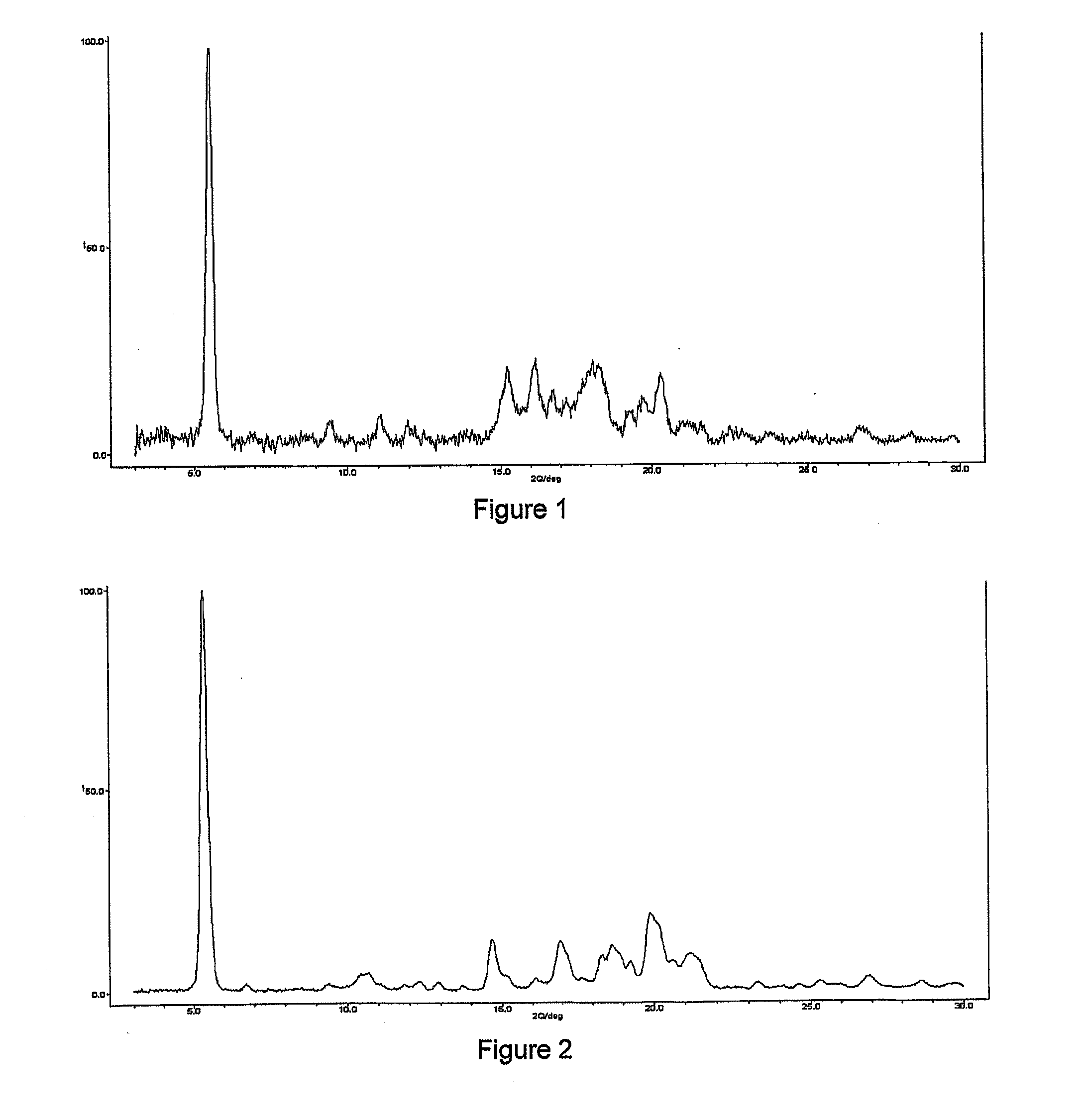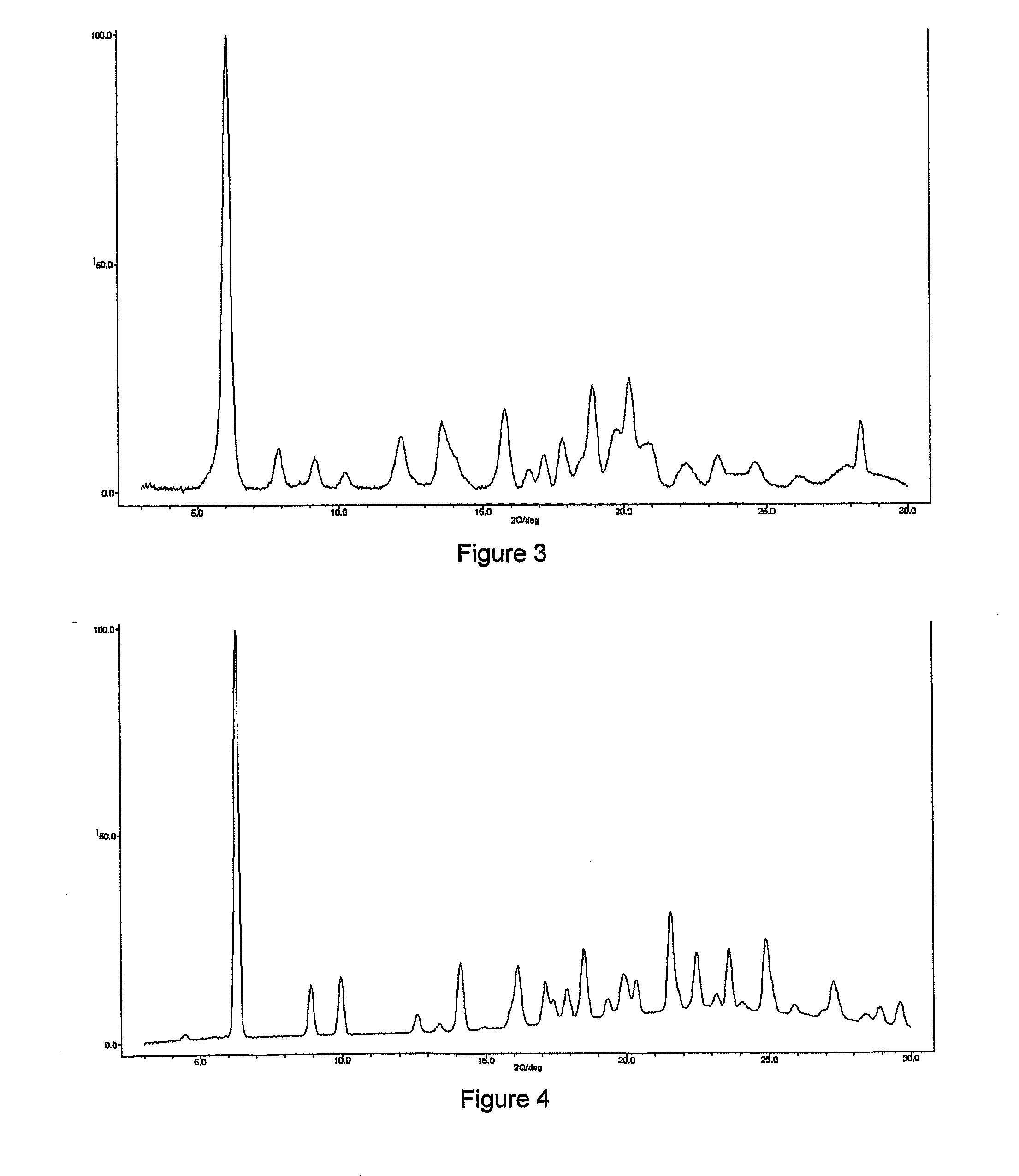Hydrobenzamide derivatives as inhibitors of hsp90
a technology of hydrobenzamide and derivatives, which is applied in the direction of drug compositions, immunological disorders, metabolism disorders, etc., can solve the problems of stress on the cell by increasing the synthetic burden of proteins
- Summary
- Abstract
- Description
- Claims
- Application Information
AI Technical Summary
Benefits of technology
Problems solved by technology
Method used
Image
Examples
example 1
Step 1
4-Acetoxy-2-hydroxy-benzoic acid methyl ester
[0810]
[0811]Resorcinol methyl ester (50 g, 0.298 mol) and N,N-dimethyl-4-aminopyridine (0.27 g, 0.0022 mol, 0.74 mol %) were added to toluene 0.2 L followed by acetic anhydride (30 mL, 0.318 mol). The solution was heated to 50° C. for 2 h. The solvent was removed by evaporation at 50° C. to a small volume and the residue was azeotroped once with toluene. To the residual oil was immediately added toluene (100 mL) whilst still warm and the solution used for Step 2 without further purification.
Step 2
5-Acetyl-2,4-dihydroxy-benzoic acid methyl ester
[0812]
[0813]The toluene solution from Step 1 was cooled in an ice bath under N2 and triflic acid (26 mL) added slowly over 30 min. On stirring a fine white solid was formed which dissolved on stirring for 16 h at RT to give a yellow solution. To the solution was added acetyl chloride (2 mL) and the solution stirred at RT for a further 1 h. This solution was cannulated into a stirred cooled (0°...
example 2
(2,4-Dihydroxy-5-isopropyl-phenyl)-[5-(4-methyl-piperazin-1-ylmethyl)-1,3-dihydro-isoindol-2-yl]-methanone L-lactate salt (form FL1)
[0849]The product of Example 1 (1.24 g, 3.303 mmol) was suspended in ethanol (3 mL) and EtOAc (5 mL) and a solution of L-lactic acid (0.285 g, 3.13 mmol) dissolved in ethanol (3 mL) was added. The solution was heated until clear and then was filtered. EtOAc (5 mL) was used to wash the filter and the combined filtrates were stirred at RT for 2 h with seeding. The crystalline mass which formed was removed by filtration, was washed with EtOAc and then dried in vacuum at 50° C. to give the title compound 1.29 g. 1H NMR (400 MHz, Me-d3-OD): 7.30 (s, 3H), 7.18 (s, 1H), 6.39 (s, 1H), 4.91 (s, 4H), 4.08 (q, J=6.8 Hz, 1H), 3.70-3.63 (m, 2H), 3.28-3.15 (m, 1H), 3.01 (s, 4H), 2.68 (m, 7H), 1.36 (d, J=6.8 Hz, 3H), 1.23 (d, J=6.9 Hz, 6H).
example 2a
(2,4-Dihydroxy-5-isopropyl-phenyl)-[5-(4-methyl-piperazin-1-ylmethyl)-1,3-dihydro-isoindol-2-yl]-methanone L-lactate salt
[0850]Example 2A describes a synthetic route containing essentially the same process steps as the route described in Examples 1 and 2 but wherein the process conditions are more suited to larger scale reactions.
Step 1
4-Acetoxy-2-hydroxy-benzoic acid methyl ester
[0851]To a heated solution (50° C.) of resorcinol methyl ester (16.5 Kg, 98.1 mol) and N,N-dimethyl-4-aminopyridine (89.1 g, 0.73 mol, 7.4 mol %) in toluene (66 L) was slowly added (over 2 h) acetic anhydride (9.9 L, 104.9 mol). The solution was heated to 50° C. for a further 1.5 h and then the solvent was removed by evaporation at 50° C. to a small volume and the residue was azeotroped once with toluene. To the residual oil was immediately added toluene (33 L) whilst still warm and the solution used for Step 2 without further purification.
Step 2
5-Acetyl-2,4-dihydroxy-benzoic acid methyl ester
[0852]The tolu...
PUM
| Property | Measurement | Unit |
|---|---|---|
| Molar density | aaaaa | aaaaa |
| Molar density | aaaaa | aaaaa |
| Molar density | aaaaa | aaaaa |
Abstract
Description
Claims
Application Information
 Login to View More
Login to View More - R&D
- Intellectual Property
- Life Sciences
- Materials
- Tech Scout
- Unparalleled Data Quality
- Higher Quality Content
- 60% Fewer Hallucinations
Browse by: Latest US Patents, China's latest patents, Technical Efficacy Thesaurus, Application Domain, Technology Topic, Popular Technical Reports.
© 2025 PatSnap. All rights reserved.Legal|Privacy policy|Modern Slavery Act Transparency Statement|Sitemap|About US| Contact US: help@patsnap.com



